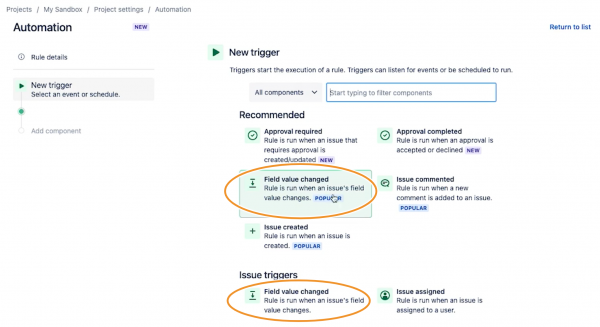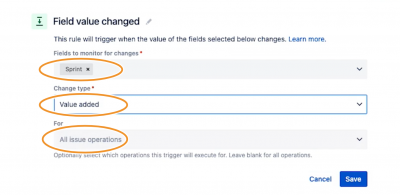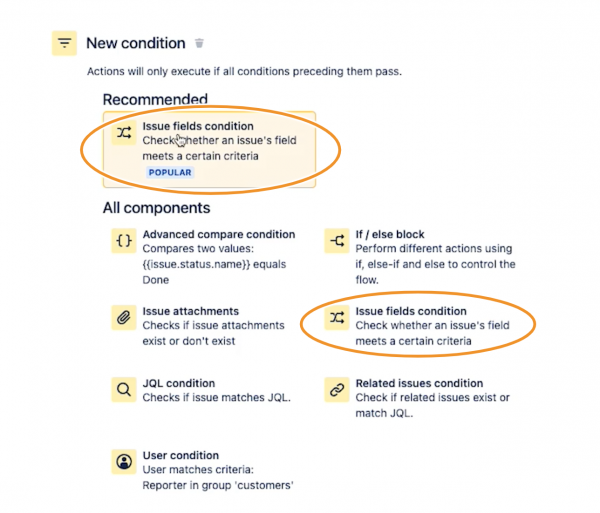A common challenge faced by Scrum teams is the repetitive creation of sub-tasks during each Sprint planning session. From mandatory Product Owner Reviews at different stages of development to various other recurring tasks, this process can become time-consuming, bothersome, and prone to errors. However, there’s good news – Jira offers a solution to streamline and automate the generation of these regular sub-tasks, saving valuable time and effort.
How to access Jira Automation
Before diving into automation, ensure you are logged in as an administrator. To access Jira Automation, you have two options:
- Click on the lightning icon at the top right corner of the Active Sprints view.
- Go to Project Settings in the left bar, followed by Automation.

To create an automation rule , click Create Rule on the top right corner.

If you prefer, watch our video on ‘How to automatically create subtasks in Jira to speed up Sprint Planning’.
Elements of a Jira Automation Rule
A Jira Automation Rule comprises three elements: Trigger, Condition & Action.

- Trigger: This determines the event within Jira that will activate the rule.
- Condition: These are defined criteria that must be met for the rule to execute.
- Action: The action performed once the conditions are met.
Setting up the trigger
A common approach is to use the “Issue created” trigger in Jira, automating the process whenever a new issue is generated. However, this method may lead to an abundance of unused sub-tasks, as not all Product Backlog items might be implemented by the team. Additionally, some sub-tasks might become irrelevant over time due to changes in the team’s implementation approach. Moreover, the automation won’t cover items already present in the Product Backlog, requiring manual creation.
To ensure better control and relevance, I’d recommend setting up a trigger when a Product Backlog item is added to a Sprint.
- Choose “Field value changed” as the trigger type.


2. Select Sprints from the dropdown menu to trigger automation when the Sprint field changes.
3. Select Value Added as the Change Type, ensuring automation occurs when a Product Backlog item is added to a Sprint.
Setting up the condition
Let’s consider a scenario where we want to automatically create a sub-task for the Product Owner to review an item during the Sprint, but only if the issue is a user story.
Select Issue fields condition as the condition type.

Choose “Issue Type” under Field and set the Value to “Story.”

This ensures that only when a user story is added to a Sprint, a sub-task will be created for the Product Owner’s review.
Setting up the Action
Now, it’s time to define the action that occurs when the conditions are met.
Search for “Create Sub-tasks” in the search box or click on the respective option.

In this example, we used “Product Owner Review” as the sub-task summary.

Name the automation rule, e.g., “Automatically Create Sub-task,” and enable it to put it into action.

By leveraging Jira’s automation capabilities, you can significantly expedite Sprint planning by automatically generating sub-tasks based on specific triggers and conditions. This automation streamlines your workflow, reduces manual efforts, and ensures that your team stays focused on the more critical aspects of the Sprint.
With Jira Automation, you have a powerful ally to optimize your Scrum process and boost your team’s productivity. Embrace automation and unlock the full potential of Jira for seamless Sprint planning!
In the next blog, we’ll show you how to test the automation of sub-tasks in Jira & prevent duplicate sub-tasks from being created.

